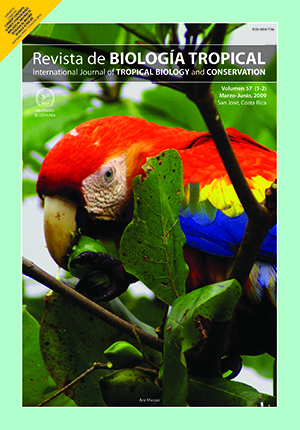Abstract
The octopus Octopus hubbsorum (Berry 1953) ranges widely and is important for the artisanal fishery in Puerto Angel, Oaxaca, Mexico. Samples were taken approximately at every two weeks from January 2002 to November 2003. All organisms were measured for dorsal mantle length (DLM) and total weight; sex and maturity gonadic stage were registered. For the stomach content analysis, frequency of occurrence and emptying indexes were used. The 352 organisms caught ranged from 4 to 18 cm in DLM; the sex ratio was different from 1 (χ2 = 24.2, p<0.05) throughout the year. The maximum values of the GSI appeared in May (4.1917 for females; 1.2675 in males). LDM for first sexual maturity (LDM50%) was 16 cm (females) and 14 cm (males). Octopus hubbsorum moves from deep waters to the coast, probably in search of better conditions, and lays masses of eggs on rocky substrata. They are fished from March to October, with higher intensity in April and May. Fishing effort was related to the oceanographic characteristics and the atmospheric conditions of the area. From April to September the CPUE monthly mean was 20-10 kg/divers/day. Using the CPUE and environmental condition relationship, the estimated adequate superficial temperature for fishing is 29.5 °C##plugins.facebook.comentarios##

This work is licensed under a Creative Commons Attribution 4.0 International License.
Copyright (c) 2009 Revista de Biología Tropical
Downloads
Download data is not yet available.






